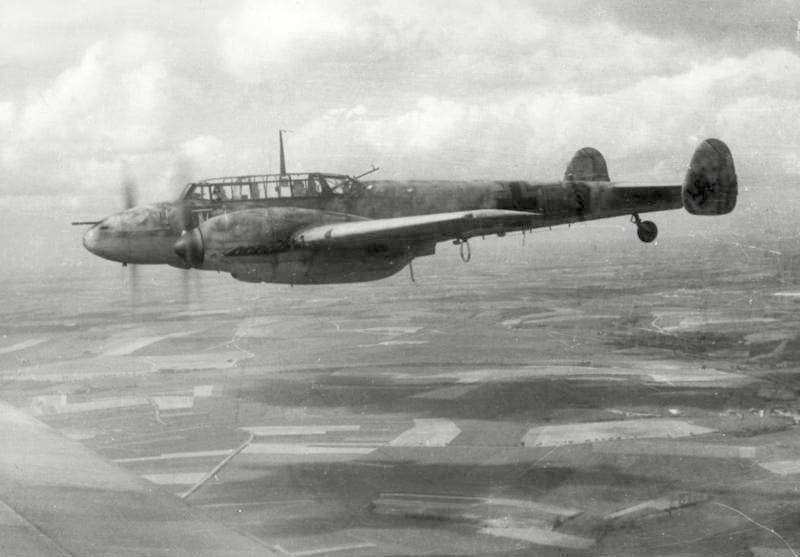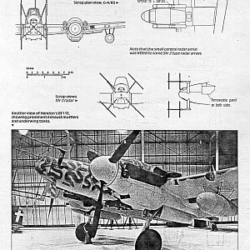Messerschmitt Bf 110 History
The fearsome-looking Messerschmitt Bf 110 was actually rather defenceless in the face of determined fighter opposition. However, it found its niche as a nocturnal predator and accounted for 60 percent of Germany’s night-fighter defences.
The Bf 110 was the second production warplane designed by Prof Willy Messerschmitt after joining the Bayerische Flugzeugwerke AG, and was evolved in response to an Reichsluftfahrtministerium (RLM) specification of early 1934 for a long-range escort fighter and Zerstörer (destroyer) aircraft. It was an advanced, all-metal design with twin rudders and a long greenhouse canopy. The Messerschmitt Bf 110 was fast for a relatively heavy twin-engined machine, but was also heavy on the controls and less manoeuvrable than was desired.
Four pre-series Bf 110A-0s were ordered, and these, due to the comparative scarcity of DB 600 engines, were fitted instead with 610 hp Jumo 210B units. These proved clearly inadequate, and were succeeded in the spring of 1938 by two Bf 110B-0 aircraft with 690 hp DB 600A engines to carry out trials for the initial Bf 110B-1 production series. Plans to evaluate the B-1 operationally in the Spanish Civil War were forestalled when that conflict was resolved before it was ready for service. Thus the first Messerschmitt Bf 110 model to go into active service was the Bf 110C, in which increased power was provided by the use of DB 601A engines. Other refinements appearing in the C model included squared-off wingtips to improve the manoeuvrability, and a modified crew enclosure. The BF 110C entered service in 1939, over five hundred of this model being on the Luftwaffe’s strength by the end of that year. Some were produced for the fighter-bomber and reconnaissance roles, and the Bf 110 was employed primarily in ground-attack manoeuvres during the invasion of Poland. Hence it was not until it was fully exposed as a fighter, in the Battle of Britain, that its shortcomings in that capacity became apparent. Losses became so heavy that the Luftwaffe was obliged to send Messerschmitt Bf 109s with the bomber formations to protect their Messerschmitt Bf 110 escorts. Production of the C model continued, latterly with 1,200 hp DB 601N engines, but many of the earlier machines were withdrawn to such second-line duties as glider towing. By late 1942, when it became apparent that the Messerschmitt Me 210 was not going to be a satisfactory replacement for its predecessor, Bf 110 production was stepped up again and the Bf 110G was introduced.
Total Messerschmitt Bf 110 production, in all versions, was approximately six thousand one hundred and fifty, and ended early in 1945.





